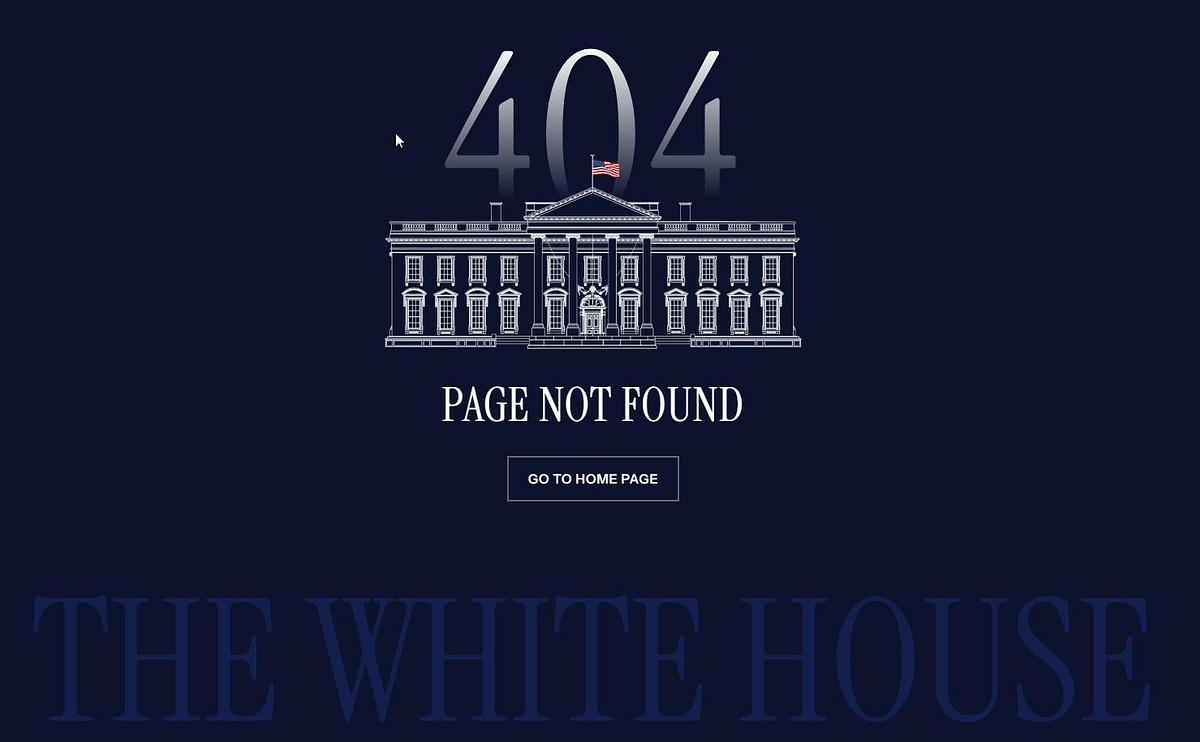The Erosion of Digital Inclusion: Trump's Assault on Accessibility
22 January 2025 - Emma Kirk
.png)
In a move that has sent shockwaves through the community advocating for diversity, equity, and inclusion (DEI), President Donald Trump has ordered all federal employees involved in DEI roles to be placed on paid leave. This decision, coupled with the removal of the Accessibility Statement from the White House website, replaced by a 404 error page, raises significant concerns about the future of inclusive design and accessibility in the United States and signals a disregard for the needs of individuals with disabilities.

Lessons from the First Administration
This is not the first time the Trump administration has taken steps that negatively impact accessibility and inclusion. During his first term, the administration removed pages about disabilities from the White House website.
This pattern of behaviour raises critical questions about what we can expect in his second term. Will there be further rollbacks of policies designed to protect and support marginalised communities? How will these actions affect the broader societal push towards inclusivity?
There are wider questions still around how the removal of accessibility features align with the principles of equal access enshrined in the Americans with Disabilities Act. What message does this send to the 61 million Americans living with disabilities about their place in society?
The Future of Section 508
Given the precedent set in Trump's first term and his recent actions, we must consider the potential ramifications for the future of Section 508 and one must ask: Will Section 508 survive this administration?
Section 508 of the Rehabilitation Act requires federal agencies to make their electronic and information technology accessible to people with disabilities. As such, the implications of weakening or eliminating Section 508 would be far-reaching. Without it, federal agencies could revert to inaccessible digital practices, excluding millions from accessing vital government services and information, effectively shutting them out of the digital world. The ripple effects could extend to the private sector as well, potentially eroding years of progress in digital accessibility and providing a permission structure for private companies to weaken their provisions for people with disabilities.
Whilst the Executive Order states that it shall be implemented consistent with applicable law, only time will tell if the ADA and Section 508 remain intact.
A Stark Contrast: The EU's Commitment to Accessibility
As the US appears to backslide on digital inclusion, the European Union is forging ahead with its commitment to accessibility. The European Accessibility Act is set to come into force in June 2025, mandating accessibility for a wide range of products and services.
Will this stark contrast in approaches create a divide in global accessibility standards?
The European Union's Response
As the European Accessibility Act comes into force in June of this year, the European Union has demonstrated a strong commitment to accessibility, mandating accessibility for a wide range of products and services. How will the EU react to the Trump administration's regressive policies? Will they take a stand against these actions, or will they focus solely on their own initiatives? The EU's response could set a precedent for how other nations address accessibility and inclusion on a global scale.
The Broader Impact
These actions don't occur in a vacuum. They have real-world consequences for millions of people. For example:
- How will students with disabilities access educational resources if government websites become inaccessible?
- What barriers might arise for disabled veterans seeking support services?
- Could funding for assistive technologies and accessibility research be slashed?
- Will the US continue to participate in developing international accessibility standards development?
- Could this lead to a 'brain drain' of accessibility expertise from the public sector?
A Call to Action
At User Vision, we have spent 25 years working with clients to ensure that digital solutions are accessible to everyone. The recent actions by the Trump administration highlight the importance of our work and the need for continued advocacy. We must ask ourselves: What can we do to counteract these regressive policies? How can we ensure that digital doors remain open for all users, regardless of their abilities?
As we navigate these uncertain times, it's more crucial than ever for businesses and organisations to reaffirm their commitment to digital inclusion. We must not allow the progress of recent years to be undone by short-sighted political manoeuvres.
We call upon our clients, partners, and the wider business community to:
- Reaffirm commitments to digital accessibility, regardless of political winds
- Advocate for the maintenance and strengthening of accessibility laws and standards
- Invest in accessibility education and training to build a more inclusive workforce
- Engage with policymakers to stress the importance of digital inclusion.
Looking Ahead
While the path forward may seem uncertain, one thing remains clear: the fight for digital inclusion is more critical than ever. As we navigate these challenging times, let us remember that accessibility is not a luxury - it is a fundamental right.
Will you join us in ensuring that the digital world remains open and accessible to all, regardless of ability or political climate?
The fight for digital inclusion is far from over.
In fact, it may have just begun anew.
Sources:
- Trump orders all federal DEI employees placed on paid leave starting Wednesday(this will open in a new window)
- White House removes Constitution, LGBTQ+ & HIV resources & Spanish language version from site(this will open in a new window)
- Trump administration directs all federal diversity, equity and inclusion staff be put on leave(this will open in a new window)
- Breaking Down All of Trump’s Day 1 Presidential Actions(this will open in a new window)
- Americans with Disabilities Act(this will open in a new window)
- Section 508(this will open in a new window)
- European Accessibility Act(this will open in a new window)
- Understanding the European Accessibility Act: A Definitive Guide